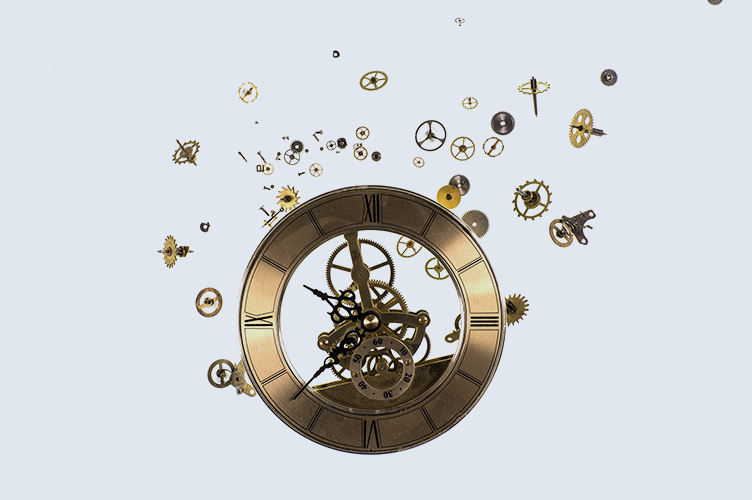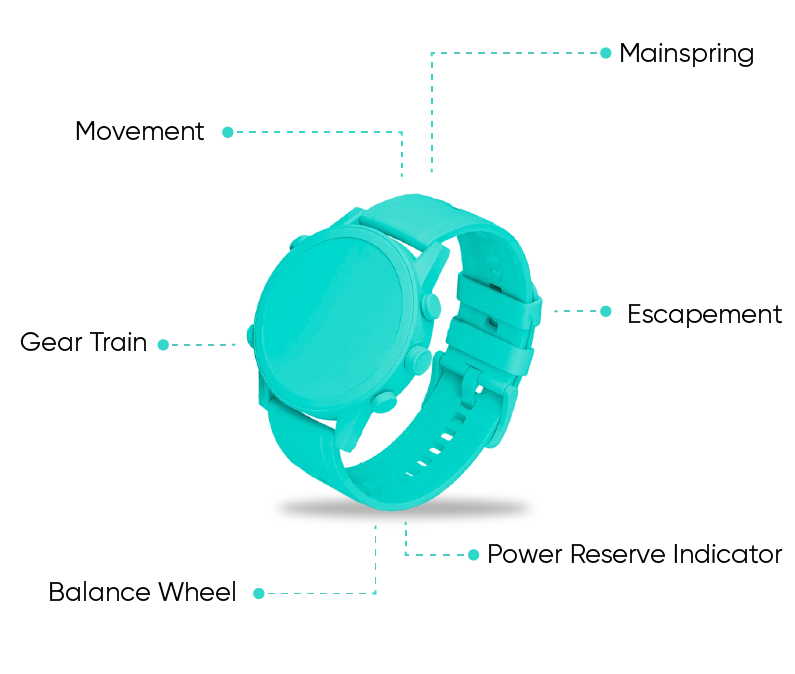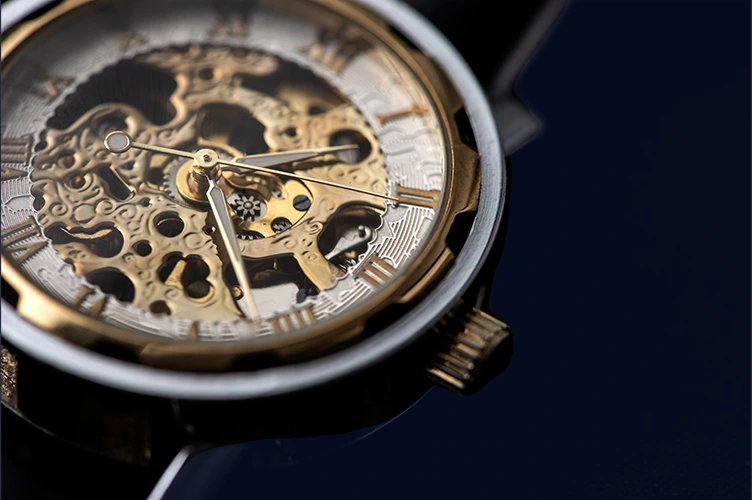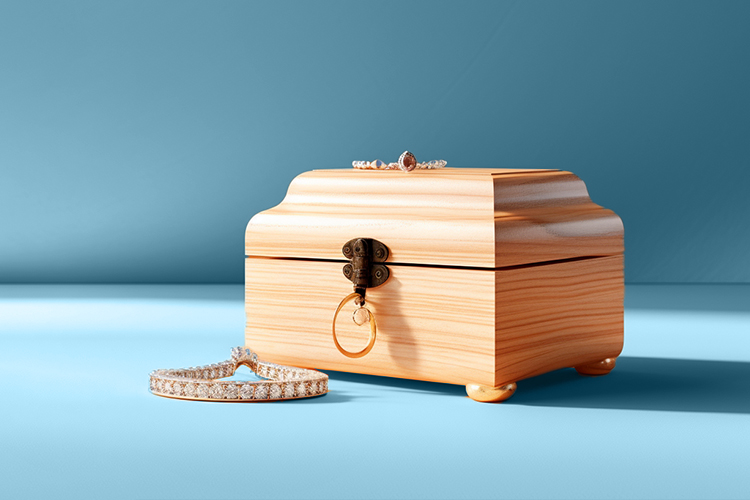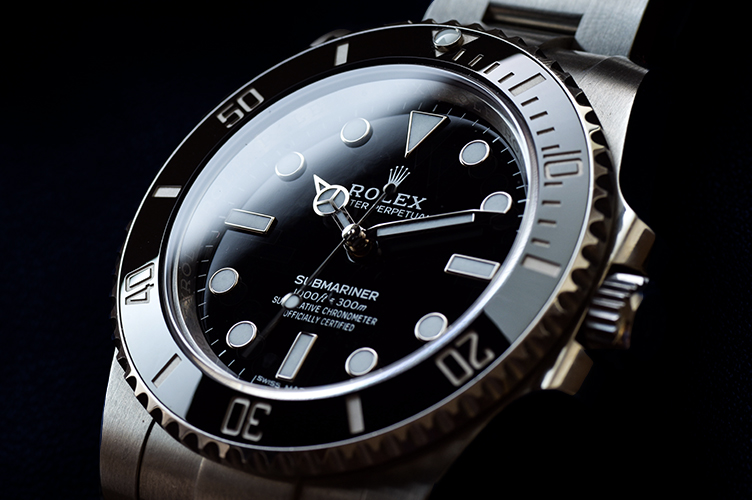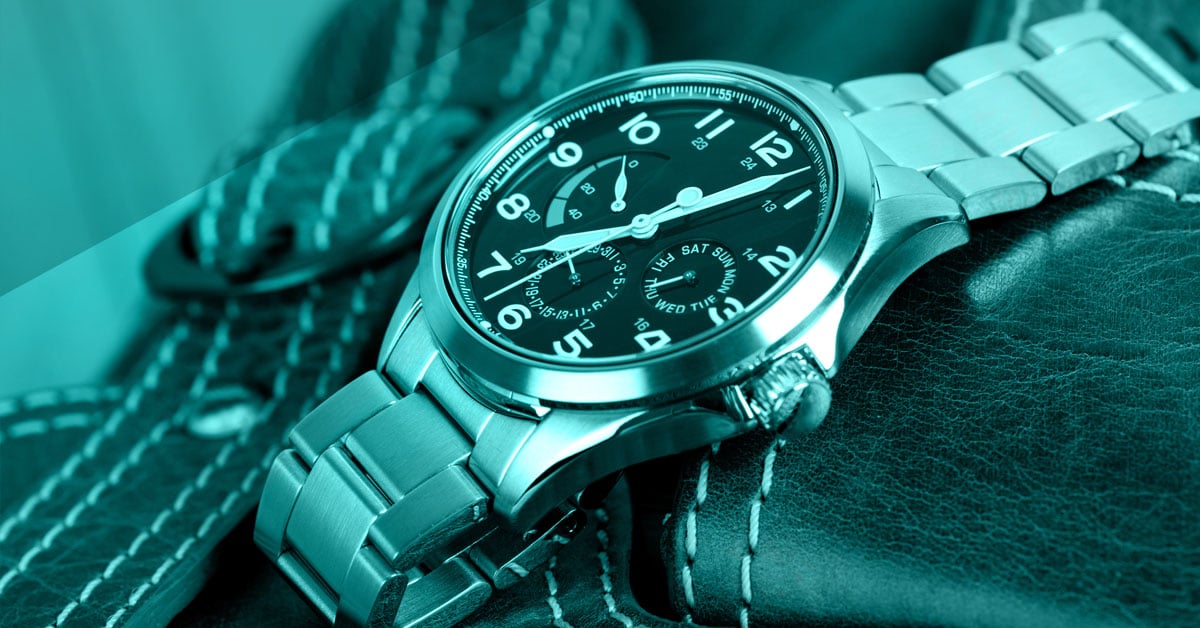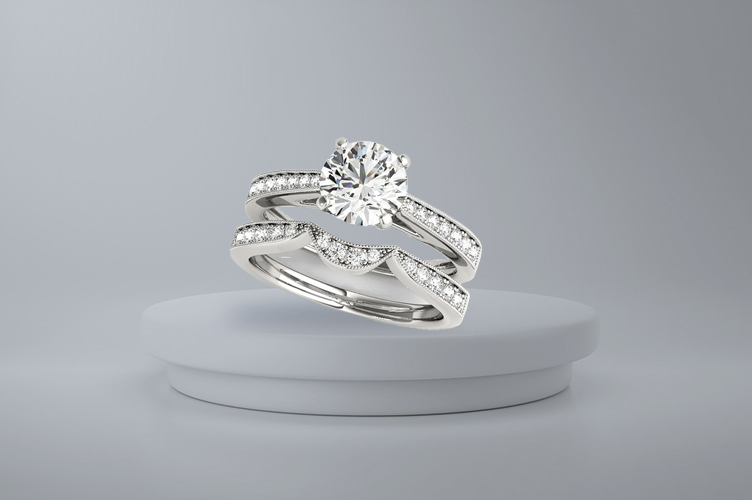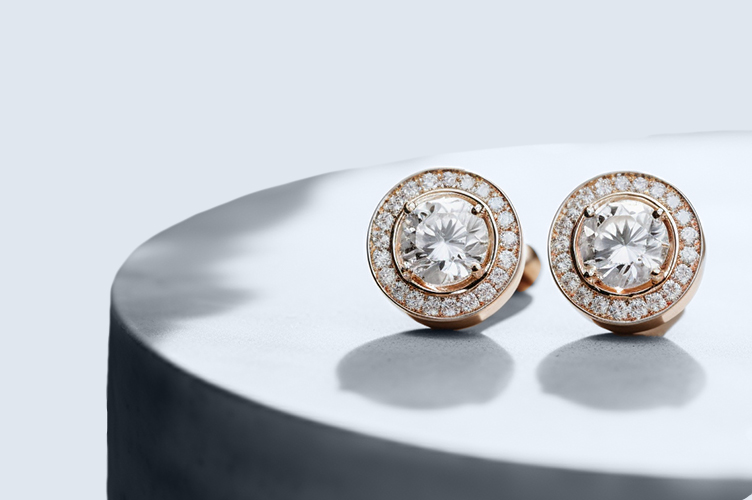While most of us casually glance at our watches to check the time, few truly appreciate the intricate design and artistry that goes into creating these remarkable devices.
A wristwatch is more than just a timekeeping device; it’s a marvel of engineering, a statement of style, and for some, a treasured heirloom. Crafted with precision and attention to detail, a watch combines hundreds of intricate components that work harmoniously to keep accurate time.
From the everyday digital watch to high-end luxury watches, each timepiece shares a basic watch anatomy. Essential parts of a watch, like the watch case, the dial, watch bands, and the movement, all contribute to the overall functionality of a piece. Each part is meticulously designed and assembled to ensure the watch functions smoothly.
Keep reading to learn more and unravel the complexities behind these fascinating timekeeping masterpieces.
What You Will Learn
What’s Inside the Watch Case?
The watch case is the protective housing that encases all a watch’s internal mechanisms and components. Its primary function is to safeguard the intricate elements within, from the delicate oscillating balance wheel that regulates time to the powerful mainspring that stores energy.
Some of the key watch components typically found inside the case include:
- The Watch Movement
The watch movement, also called a caliber, is the engine that powers the watch. There are three main movements used in watches: quartz, mechanical, and automatic. Quartz movements are battery-powered and regulated by the oscillation of a small quartz crystal. Mechanical movements are powered by a tightly wound spring and must be manually wound. Automatic movements, often found in luxury watches, are self-winding and powered by the kinetic energy generated by the motion of the wearer’s wrist.
- The Mainspring
Most mechanical watches have a mainspring, a coiled spring that gradually uncoils to release energy, driving the watch movement. The wearer winds the mainspring in a manual mechanical watch by turning the crown. An automatic or self-winding watch winds the mainspring using a rotor, a small metal weight that pivots with the movement of the wearer’s wrist.
- The Gear Train
The gear train is the part of a watch that transmits the power from the mainspring to the escapement. This intricate arrangement of gears also includes the wheels that move the watch’s hour hand and the minute and second hands.
- The Escapement
The escapement is the mechanism that ticks. It transfers energy to the timekeeping element (usually a balance wheel) and ensures the gears of the watch advance at a regular pace, providing an accurate measure of time.
- The Balance Wheel
Together with the escapement, the balance wheel oscillates back and forth at a constant rate, usually 28,800 times per hour in most modern watches. This oscillation helps regulate the progression of time in the watch, similar to the pendulum in a grandfather clock.
- Power Reserve Indicator
Some watches, particularly mechanical ones, have a power reserve indicator. This small dial or window shows the wearer how much energy is left before the watch needs to be rewound. The case can also house complications, additional mechanical features beyond the basic display of hours, minutes, and seconds. These can range from date displays to moon phases and annual calendars.
What is a Watch Crystal?
The watch crystal is the transparent cover that guards the watch face, protecting it against dust, dirt, and damage while allowing for clear dial visibility.
Often crafted from acrylic, mineral glass, or sapphire crystal, the crystal must balance durability with clarity. Of these, sapphire crystal is the most desirable due to its high scratch resistance and exceptional hardness, second only to diamond. This makes it a popular choice for luxury and dive watches, which require high durability and pressure resistance.
The shape and thickness of the watch crystal can also vary, contributing to the watch’s overall aesthetic appeal and functionality. Whether domed, flat, or magnified, the watch crystal plays a critical role in a watch’s overall design and operation.
What are the Parts of a Watch Face? (What is the Dial on a Watch?)
The watch face, also known as the watch dial or dial, displays the various aspects of time. At the most basic level, a main watch dial includes the hour, minute, and often second hands, along with hour markers or numerals.
A date window is a common addition, often located at the 3 o’clock position. Watches may also have subdials for displaying other information, such as stopwatch functions or multiple time zones.
A watch face’s design and layout can vary, reflecting the brand’s style, function, and the individual wearer’s taste.
What are Watch Complications?
“Watch complications” is the collective name for certain parts of a watch, including date displays, moon phase indicators, chronographs, alarms, repeaters (which chime the hour and minutes on demand), and even tourbillons (mechanisms that counteract the effects of gravity on the watch’s accuracy). They add complexity, or complications, to a watch movement, requiring exceptional skill and precision on the part of the watchmaker.
Some high-end luxury watches like those from Rolex feature multiple complications, which are, as a whole, then considered “grand complications.” These grand complications are masterpieces of horological craftsmanship.
While complications add to a watch’s utility and aesthetic appeal, they also increase its mechanical complexity and, consequently, its price. For many watch enthusiasts and collectors, the intricacy and functionality provided by these complications enhance the watch’s allure and value.
Are Watch Bands Important?
Watch bands, also known as watch straps or bracelets, play a dual role in a watch’s functionality and aesthetics. They secure the watch to the wrist and they also contribute to the overall look and feel of the timepiece.
Watch bands feature various materials, each material offering a different style and comfort level. For instance, leather straps are often associated with classic, dressy watches, while stainless steel bracelets are common on marine and sports watches for their durability and resistance to water. Rubber or silicone straps, lightweight and water-resistant, are popular for sporty outdoor watches.
The choice of band material and style can transform the appearance of a watch, allowing wearers to personalize their timepieces to match their wardrobe, activity, or mood.
How Important is the Watch Crown?
The crown of a watch, though small in size, is vital to a watch’s functionality and design. The wearer primarily uses the crown to set the time and date on a watch, by pulling it out and turning it. The crown also serves to wind the mainspring for mechanical and automatic watches, delivering the necessary power to operate.
The crown is carefully designed to maintain the watch’s water resistance, ensuring no moisture can enter the case when the crown is pushed in. In most watches today, especially dive watches, the crown is a screw-down crown, allowing for additional water and dust protection.
Aesthetically, the crown may contribute to a watch’s overall design, with some watch brands embellishing the crown with logos, gemstones, or intricate patterns.
Why You Need to Insure Your Watch
Watches, especially high-end and luxury ones, can be significant investments. Beyond their financial value, they often hold sentimental value as heirlooms or gifts marking special occasions.
When you insure your watch with specialized insurer BriteCo, you’re protecting your investment from unforeseen incidents, including theft, loss, accidental damage, or natural disasters. With our policies tailored specifically for jewelry and watches, BriteCo offers comprehensive coverage that traditional home or renters’ insurance may not provide.
BriteCo’s process is simple and convenient. Our coverage is based on an appraisal from a certified appraiser, ensuring your watch is insured for its accurate replacement value. Then, in case of a claim, BriteCo will provide a streamlined process designed to resolve your issue promptly and fairly.
So whether you own a vintage heirloom or a cherished dive watch with a scratch-resistant sapphire crystal, insuring your timepiece with BriteCo offers protection customized to your specific needs. Remember — you’re not just safeguarding a timekeeping device, but a symbol of personal style, achievement, or cherished memories.
FAQs:
Why is the crown of a watch important?
The crown of a watch is used to set the time and date on a watch. For mechanical and automatic watches, the crown also winds the mainspring, delivering the necessary power for the watch to operate.
What is the glass on a watch called?
The glass on a watch is known as the watch crystal. It is a transparent cover that protects the watch face or dial. While it’s often referred to as glass, it can be made from a variety of materials, including acrylic, mineral glass, or sapphire crystal.
What is a chronograph watch?
A chronograph watch has a built-in stopwatch function in addition to its standard timekeeping abilities. This is usually controlled by two external buttons on the side of the watch. One button starts and stops the stopwatch, and the other resets it.
Also Check:
Is Buying a Rolex a Good Investment? | BriteCo Jewelry Insurance
Is a Watch Considered Jewelry?
The Most Expensive Watch Brands in the World

